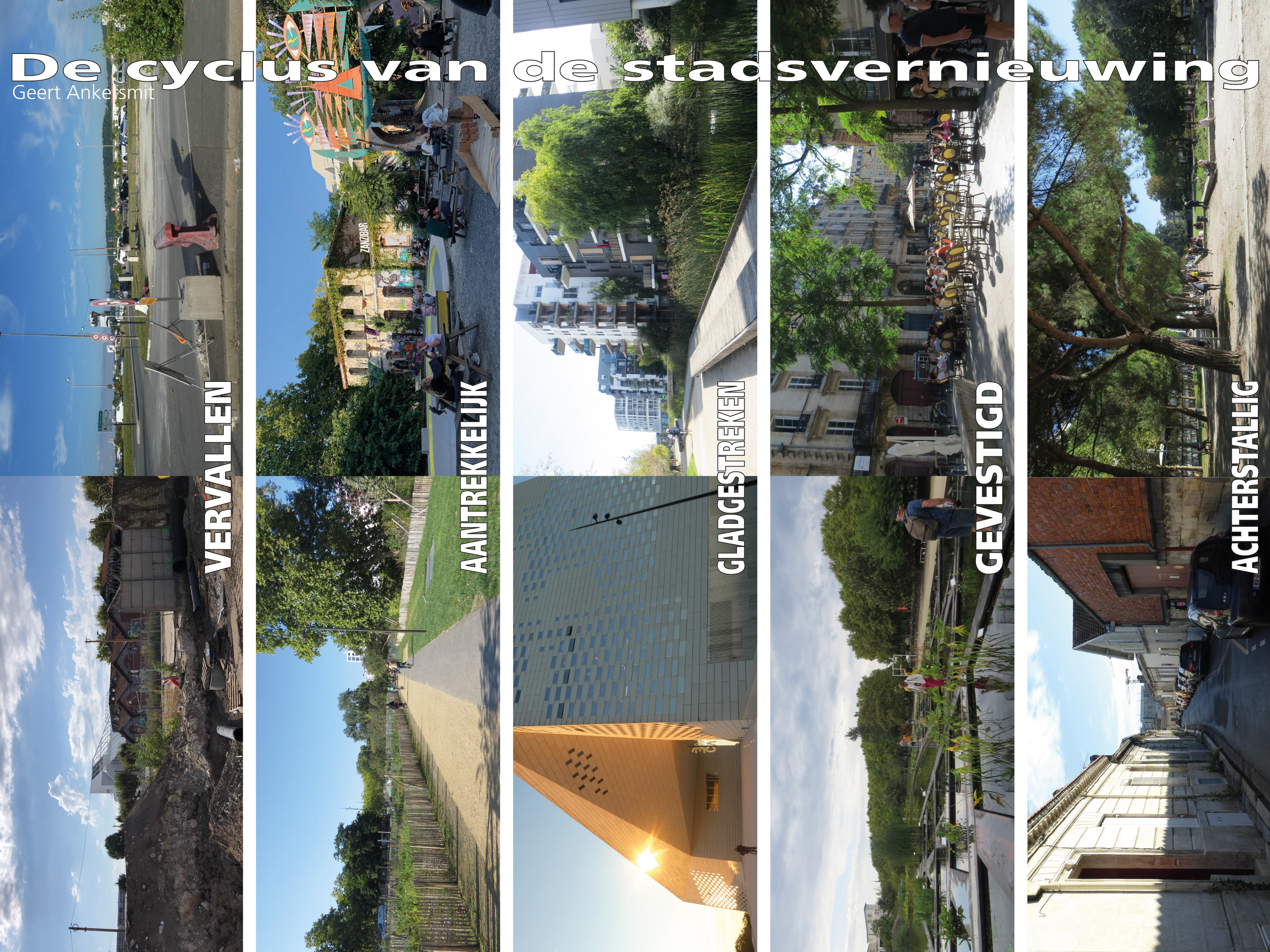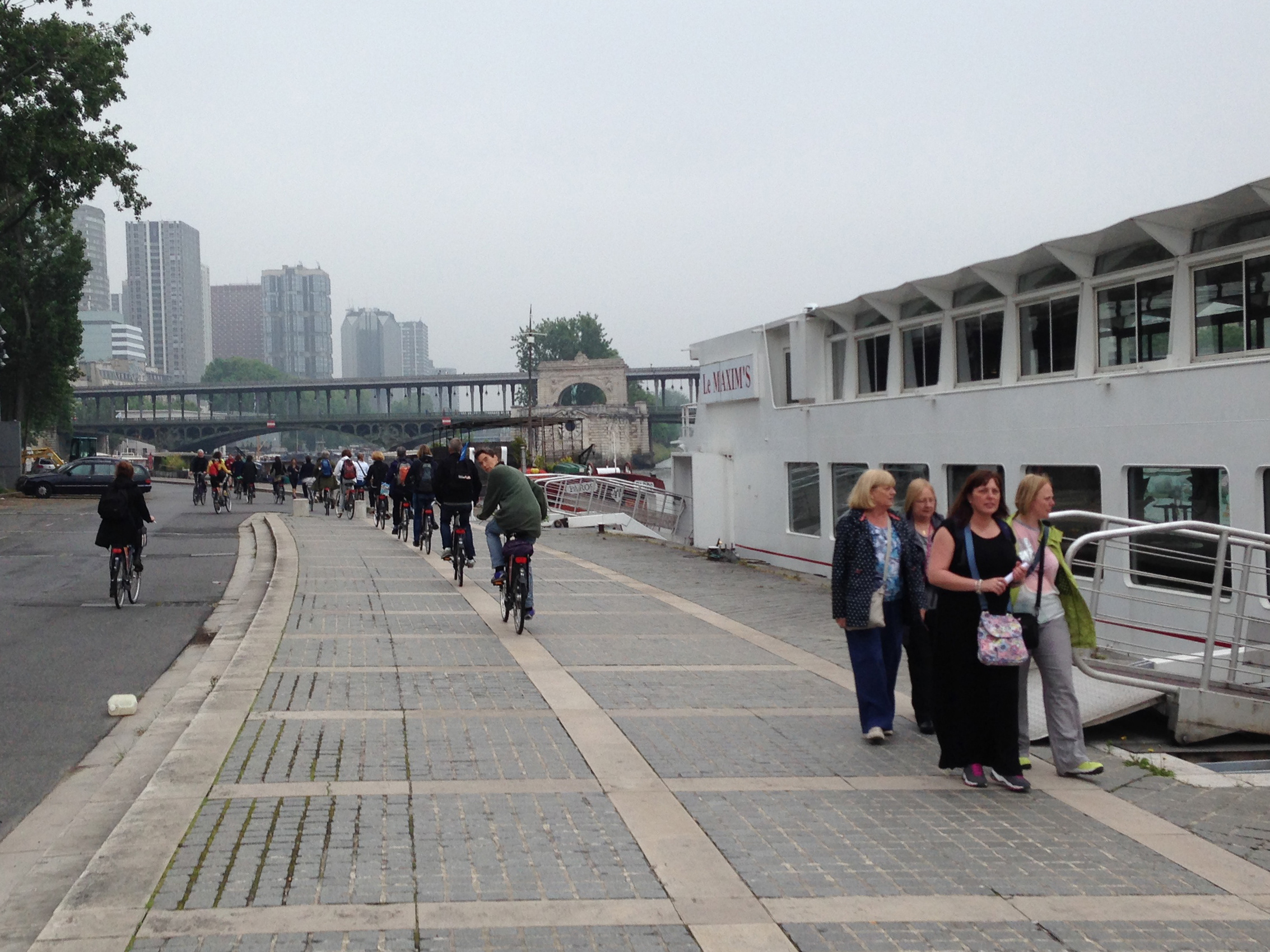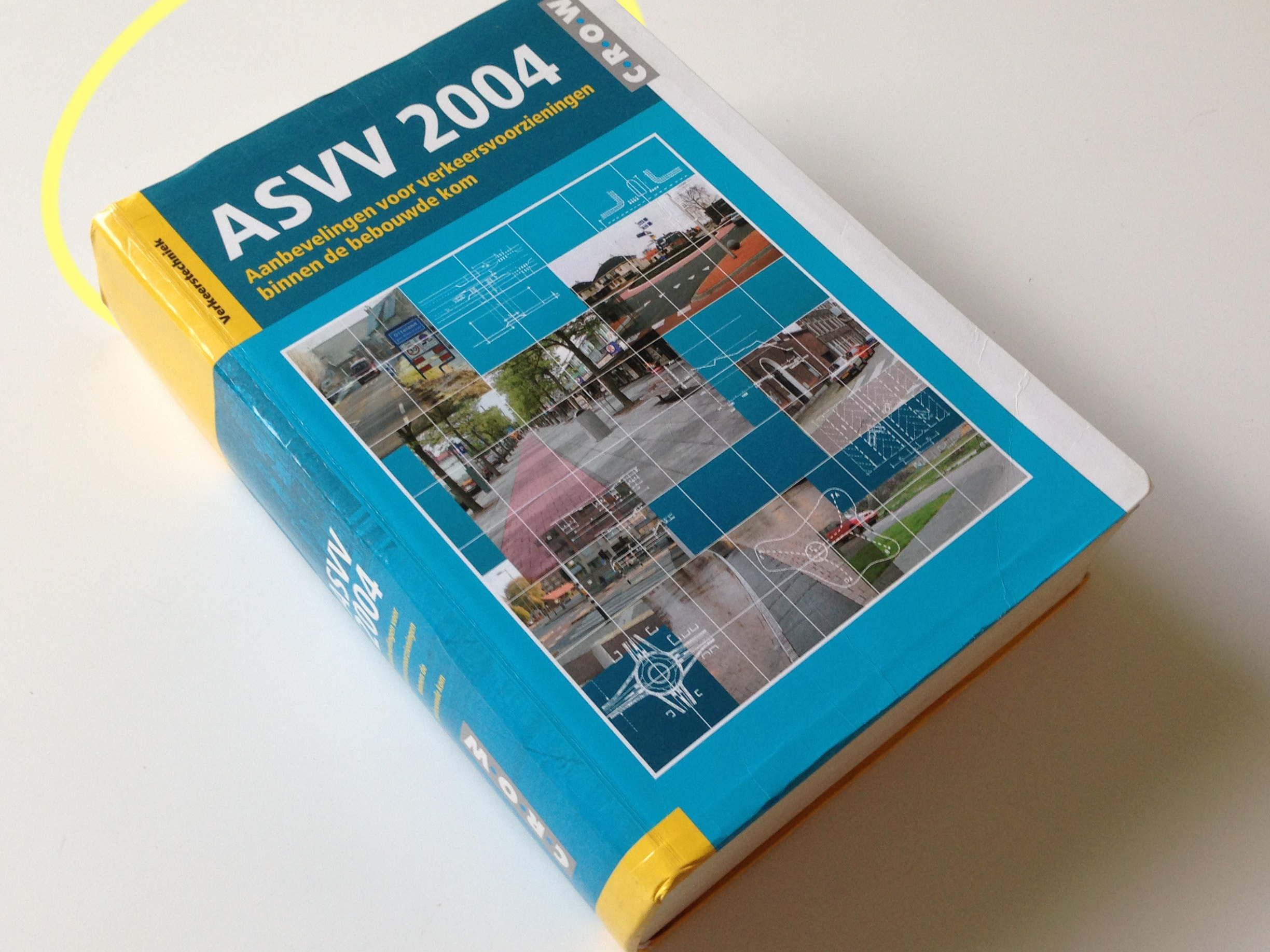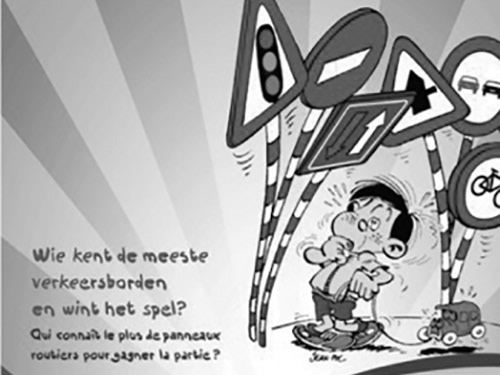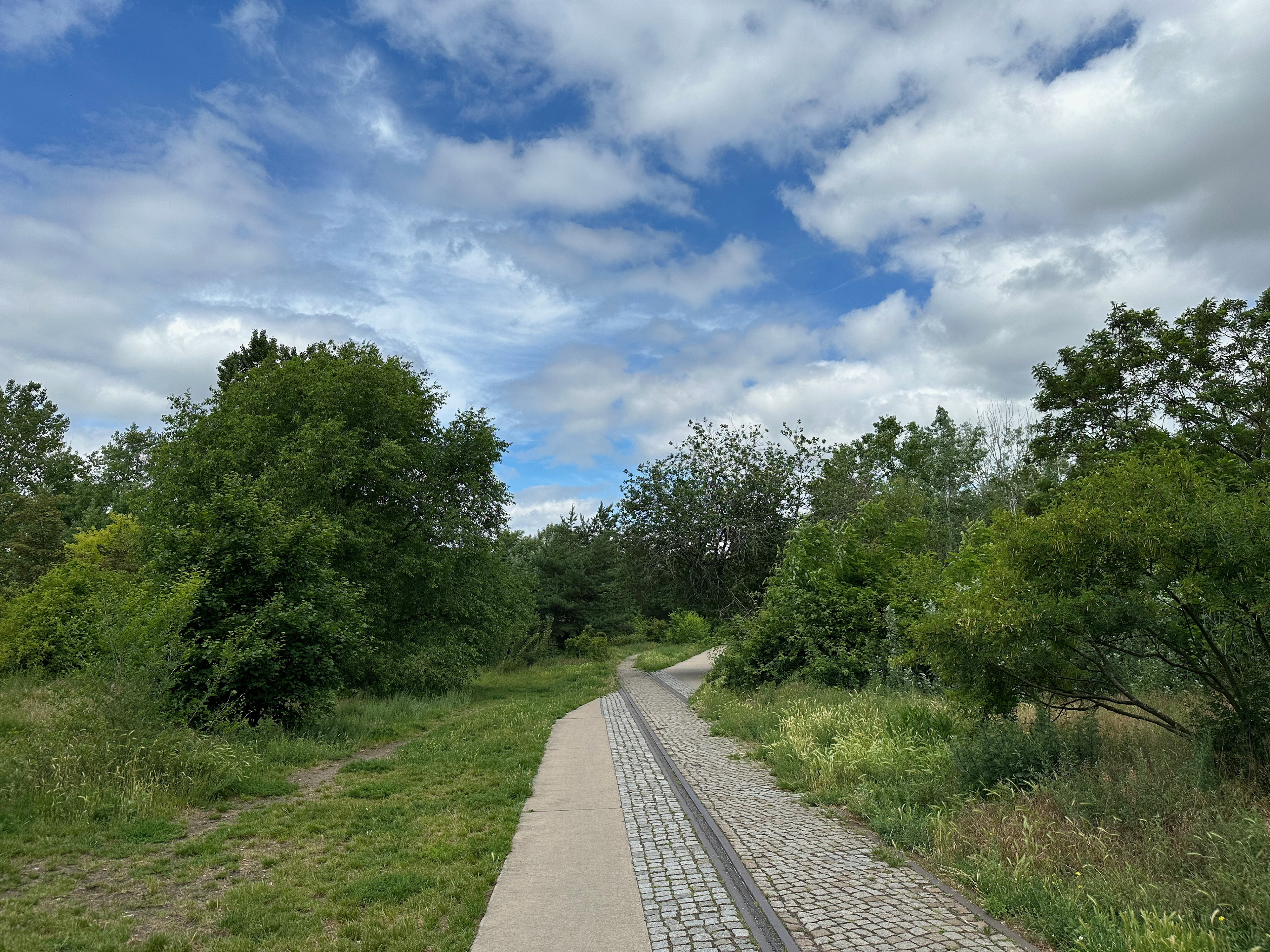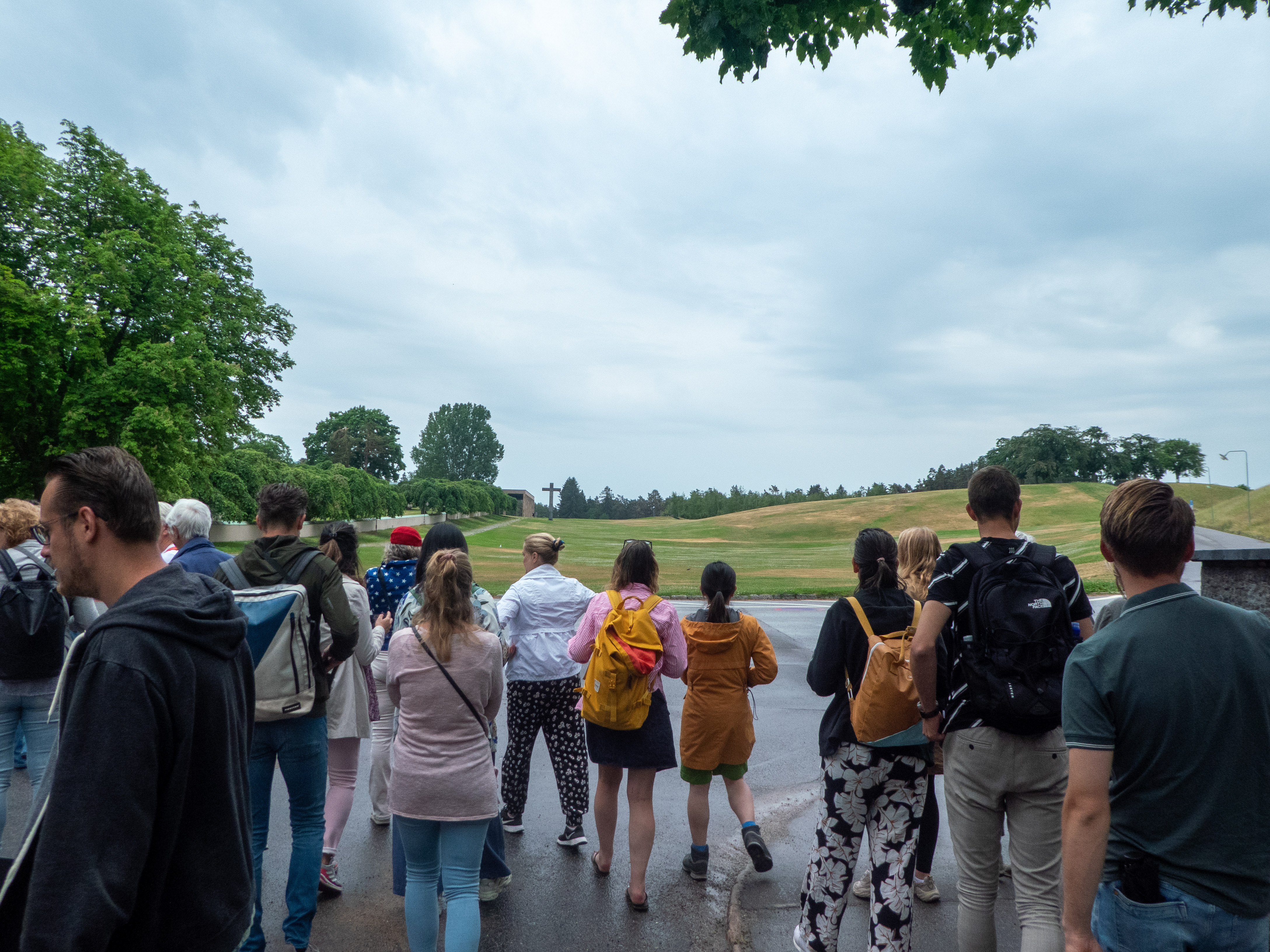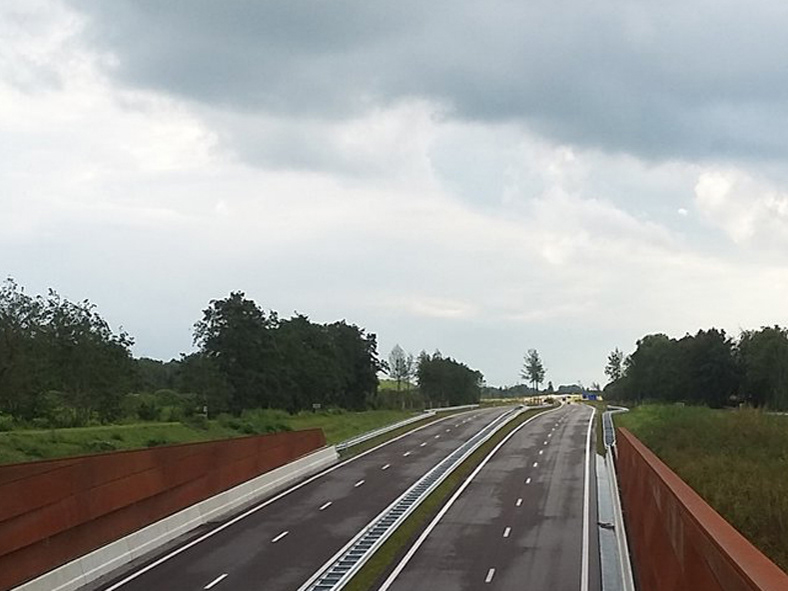Senseless sealed architecture we call our office, school or home, is disconnecting us with landscape, and thus with senses. Losing the connection with landscape because of sterile architecture increases the chance to get allergies and makes getting outside even become unhealthy for people.
It is important to connect ourselves again with the landscape. Senses have an important role in that. Materials landscape architects use are tools to stimulate senses and thus the connection of people with the landscape; landscape designers should never forget this.
It is important to connect ourselves again with the landscape. Senses have an important role in that. Materials landscape architects use are tools to stimulate senses and thus the connection of people with the landscape; landscape designers should never forget this.
The power of senses
Senses are influencing people's perception of places. If the senses are stimulated in an uncomfortable way, people are easy to dislike the place. Edward T. Hall (1969) is presenting distances for senses in his book 'The hidden dimension'. He discusses when people find things acceptable or taboo. Disadvantage is that these distances are different for every individual.
Senses are a strong tool in guiding people's perception and behaviour. In many professions different senses are being used to influence the way people behave. Especially sight, sound, taste and touch are being used a lot. Smell is emerging nowadays in the world of commerce.
Architecture and other design professions including landscape architecture tend to focus on stimulating visual and touch senses. Many studies have been done on the relationships between colours, textures and emotions. A lot of information is available about this relationship. Within a 50 millisecond exposure time "people can reliably decide whether they like or dislike a visual stimulus" (Lauriault and Lindgaard, 2006).
Sound is mostly used in stores and restaurants to create an atmosphere to attract customers. Emerging in this field is smell. Scent branding is being researched more the last years. It is also being used more often. For example, when you enter a supermarket and smell the fresh baked bread of the supermarket bakery. Big chance this smell is fake. What you actually smell is a carefully selected combination of aromas that imitate the smell of fresh baked bread. This smell is making you feel hungry and makes you buy more food.
Nowadays it is not only the supermarket which uses scent branding. Big companies, like Singapore Airlines, have developed their own brand smell, a smell which every time when it is smelled reminds people to this company or a product (Lindstrom, 2005).
75% of our emotions are influenced by smell (Lindstrom, 2005). This is because smell is the sense most closely linked to the brain's emotional centre. A scent can produce an effect in a person's mind without him or her even paying attention to it (Goldkuhl and Styvén, 2007).
Back to landscape
Landscape is continuously producing stimulus for all of our senses. Almost everything has colour, texture, smell, taste and sound. 'Immediate' sensory experience of landscape should be the starting point for the design of a landscape. This means looking closer at landscape elements to create different impressions and appreciations of the landscape. Sight is strongly dominant in design thinking, but scents, tastes, sounds and tactile experiences strongly influence how we feel and use places. "The senses together enable us to 'make sense' of places" (Dee, 2001).
Throughout the year landscape changes, and so changes our perception of the landscape. The changes that influence our perception are all related to time: day and night, seasons, and growth. Each of these time elements has another influence on our senses; day and night mostly on vision. Seasons influence vision, but also smell. Notice that vegetation smells different in every season. Growth makes us experience time itself (Dee 2001). Vegetation is an important element in a landscape design.
But when the design has been made it has to be presented to stakeholders or people that live in or near the design area. Also here senses have a possibility in convincing the audience of your design. Convincing people already has been done in many other professions. Landscape architecture still seems to be under-developed in this subject. But before explaining how senses can be used in a landscape architecture design presentation, I will first explain about the senses themselves. How they can influence people's behaviour and/or mood.
Presenting the senses: Vision
We have eyes to see and observe our surroundings. With the central part of our vision area we can see sharp and colours. This is the area we use most. It covers a visual angle of 3 degrees in the vertical plane and 12 to 15 degrees in the horizontal plane (Hall, 1969). If we look straight forward, then the outer areas of our vision can't perceive colour. This area is most sensitive for movement. So with our eyes we perceive movement and colour.
We also use our eyes to do a pre-selection for food. If food looks unhealthy, we won't eat it. Many studies have been done to proof this. An example I found had a clear and funny result. The study investigated consumer perceptions of a meal of steak, peas and French fries under colour masking conditions. After normal light was turned on, some of the consumers experienced nausea when they realised that the steak was coloured blue, the French fried potatoes were green and the peas red (Kennedy et al., 2005).
Perception of colour
Colour is being used in design (in all its meanings, from landscape to thumbnail) to catch our attention or the opposite. Our perception is being influenced by moods and feelings we associate with colours. Johannes Itten (well known from Bauhaus) identified seven kinds of colour contrasts to describe colour properties: contrast of hue, light–dark contrast, cold-warm contrast, complementary contrast, simultaneous contrast, contrast of saturation, and contrast of extension (Verity, 1980). Colour temperature is subjective and sometimes different to every individual. Though in general of the primary and secondary colours, green blue and violet are seen as cool colours, and red orange and yellow as warm (Kornerup, 1967).
A research amongst children resulted in moods related to colours: yellow for happiness, green for calmness, and orange for activeness. Another research resulted in personalities related to colours (Verity, 1980). A research by Valdez and Mehrabian (1994) found:
"Pleasure levels for blue, blue-green, green, red-purple, and purple were significantly greater than those for green-yellow, yellow, and yellow-red. Furthermore, pleasure levels for purple-blue and red were significantly greater than those for green-yellow and yellow. Finally, the pleasure level for yellow-red was significantly greater than that for yellow."
Research by Ou et al. on colour emotion and preference compared male/female and British/Chinese. They used ten colour-emotion scales: warm-cool, heavy-light, modern-classical, clean-dirty, active-passive, hard-soft, tense relaxed, fresh-stale, masculine-feminine, and like-dislike. These colour-emotion scales are strongly related to human mood and characteristics.
For landscape design a colour palette using a description of colours by these colour-emotion scales would be very useful. Maybe even relating these scales to materials landscape architects are using (from plantation to pavement) might be creating sudden atmospheres in designs easier.
Hearing
Landscape is filled with sounds. Even when there seems to be silence there are still some sounds. Humming of insects or rustling leaves on trees and shrubs, the sound of cars or an airplane passing by, mooing of a cow or a tractor ploughing the fields. All sounds from the landscape surrounding us, all sounds we can design with.
Designing with sounds is relating sounds to emotions and feelings. Music and emotion are closely connected. It can make people feel happy, sad, emotional, angry, scared, etc (Carr, 2004). If you've ever seen an epic movie you can certainly agree with that.
In cinematography music is already used to show the emotion of a movie from the first movies on. In the beginning of the twentieth century pianos and sometimes an orchestra were used to play music with the 'silent movie'. Explaining the audience what they should feel with each scene in the movie. At that time techniques and knowledge were not as sophisticated as they are nowadays. Modern movies use as many techniques as possible to influence the audience's emotions: colour and sound, but also feeling. It happens quite frequently that I'm feeling like I'm sitting on a sub-woofer while watching a movie in cinema.
Carr (2004) is comparing music with art to justify its influence on and representation of emotion:
"... we may now scrutinize the previously noted argument that: (i) insofar as works of art have (intrinsic) emotional significance, they have it by dint of representing or symbolizing emotion; (ii) musical works are works of art; (iii) therefore music has such emotional significance (if it does) only by virtue of representing or symbolizing emotion."
Carr here is not talking about cinematic music specifically, but music in general. But since all kinds of music are used in movies, all music can represent and/or affect emotion. Later he adds:
"What is striking is that in those cases where music is regarded as meaningful in the sense of aspiring to be "about" some theme or emotion, it is invariably so by virtue of providing an expressive setting for its subject rather than might reasonably be called representation. In this light, it becomes hard to see how "music alone" could represent anything whatsoever, and this thought may also prompt the view that apart from some explicit title or thematic association, music can never be expressive of emotion, only of mood" (Carr, 2004)
Combining both quotes, he states that music is a work of art, and therefore representing or symbolizing emotion. But when music is about an emotion it is an expressive setting for the subject, rather than a representation. So, music can only express mood, not emotion.
Matravers (2003) uses a sentence that summarizes the relation between music and feeling:
"Music gets us to imagine experiencing a certain feeling, and possibly expressing it or being inclined to express it in a certain manner."
Music is influencing our experience and imagination. In the mind a feeling is generated, this feeling is related to one or more emotions. Depending on the strength of the feeling our emotion is expressed in different ways and levels. Emotion is an expression of our feeling for the music; the feeling tracks the music (Matravers, 2003).
Combining music and landscape is difficult. Still there are landscapes where music can influence people, like in amusement parks. A nice example in the Netherlands is the Efteling. If you've parked your car and walk on the footpath towards the entrance, music is surrounding you, making a fairytale and happy atmosphere. Throughout the park music surrounds you, related to the theme of the area you are in. Each attraction has its own music theme. An example is the 'Flying Dutchman', a rollercoaster ride bringing you back into a spooky 17th century Dutch VOC (Eastern India Company) city.
Another landscape in which music has its influence on people is the shopping street. Each shop has its own music. In this case the music should attract specific kinds of people of specific kinds of ages. A cloths store called 'The Sting' seems to be an exception on this. Quite often I see people of all ages searching for cloths, from 6 to 60.
Touch
By touching, people are finding their way around in landscape. It starts already when we are just born. We start to touch things around us and are surprised with every touch we do. Everything is new and interesting. When we grow older we still rely on touch. Like the first careful steps on ice to try if it is strong enough and how slippery it is. Or when we sit down, we first put the hand down before the bottom will settle down; it is for balance, but also to try the softness and comfort.
Touch is a short distance or 'immediate' sense (Dee, 2001). Our skin needs to touch to be able to fully identify the texture, which leads to a straight connection between the nerve and the object.
Cho, et al. (2000) use six attributes as descriptors of texture space:
"... lightness, contrast, edginess, coarseness, directionality, and regularity."
Each of these attributes influence the perception of an object in a way. Some are for visual identification of a texture; others are for a physical identification. The physical connection with texture can tell us about the comfort of an object. Something can look comfortable, but when you touch it can feel totally the opposite.
This also is applicable on landscape. Some pavements are walking more comfortable than others; some seats can be very uncomfortable to sit on. Vision is very important in the design of places nowadays. Locales, vistas, sites and scapes are important elements in the concept of a place (Hetherington, 2003). But, to use Hetherington's (2003) words:
"What about the view from the fingertips?"
Touching something can tell us a lot more than just looking at it. It can generate a sense of place, a connection to where we find ourselves (Hetherington, 2003).
Taste and smell
Our tongue has four basic tastes: sweet, sour, bitter, salt. All the other things we taste in food are actually things we smell. That's why I combine these two senses. These are also the senses, least known amongst landscape architects in relation to the materials they use.
About the taste of eatable flowers, leaves, seeds, fruits, and roots is not being taught; though it can be something to make a design far more interesting to the people you are designing for. Also for ecology it is good to know which elements are eatable for which species, luckily more is known about this. Then why not for human?
There is no book that describes the smell of trees, shrubs, plants, and flowers. This could be an advantage for designers, because if a place doesn't smell nice, people don't want to be there. Sometimes smelly kind of trees and shrubs are being used in public places. They maybe look good, but they scare people with their smell in some time of the year. Of course also plantings with a nice odour can be used, which have the opposite effect.
Then the seasons. Each season has its characteristic smell, and it is different for every landscape and location where you are. I always notice the change of seasons at my parents' place in the north of the Netherlands. It is so nice to smell the fresh smell of spring, the warm smell of a summer morning (very early), the smell of wet grass and forests in autumn, and the cold smell of winter. Each of these smells gives me a different felling, a tickle in the lungs.
As I mentioned before, 75% of our emotions are influenced by smell (Lindstrom, 2005), because it is the sense that is most closely linked to the emotional centre in the brain (Goldkuhl and Styvén, 2007).
"Olfaction is highly specialized; it influences emotions, behaviour, perceptions of other people, and mood" (Lauriault and Lindgaard, 2006)
This is already well known in the retail environment. Nowadays there is almost no store which doesn't have its own smell. Ambient odours are able to tell the costumer information about what is sold (Goldkuhl and Styvén, 2007).
A research by Ward et al. (2007) examining the influences of ambient scent on people, found smells are influencing people in relation to: elaboration, affective and evaluative responses, purchase and repeat visit intention, and behaviour (time spent and decision making).
Presenting with senses
In design presentation scent (and the other senses) can influence the observers' behaviour. Smells can be emitted to the air from a computer through chips or machines. Smell release can be controlled to emit it only at the moment you need it (Lauriault and Lindgaard, 2006).
In their paper Lauriault and Lindgaard (2006) describe several smell maps. For example the map of Twin Cities Odorama. This map uses icons and text to describe different smells in the two imagined cities of Minneodorous and Scent Paul. A smell map like this could (or maybe should) be a part of the analysis of an area, but also could be a part of the design. What I find a pity is that you can't smell the real smell. It could be nice to experience the smell when you touch a place on the map or design. Combined with computer technology (Lauriault and Lindgaard, 2006) and huge quantities of aromatic oils available in laboratories (Caplan, 2006) this should be possible.
The techniques mentioned above for all the senses can then be applied to presentations. For example when you show a picture of the current situation or a future situation, wouldn't it be nice to smell the different trees, shrubs, herbs and flowers that you use in your design? It would surely enrich the image. Just like using the right colours and some background sounds. The sound of birds, trees, machinery and traffic can give much more atmosphere and depth to an image. Use of the right colours is also an important element.
Colours in the image should be related to the atmosphere you want to create in your image. This means they don't necessarily need to be realistic. They can be related to the season, but also to the way you want people to feel over there. This can be a great difference to the realistic situation.
Next to images you are also telling a story orally. This story should be constructed in a good way, in a logic order. There are different ways to give an explanation for a design, which I'm not going to write about here. I'm talking about how to tell the story.
First of all you should be enthusiastic and convinced about your own design, of course, that's logic. Then the tone of your voice will be good, and you will explain things in a clear way. Don't be too enthusiastic, because you will speak too quickly! This will make things messy and blur. Second: know what you are going to tell. Then you don't need to hesitate and the story will flow fluently out of your mouth. This requires some practice, in general and before each presentation. Third: mimics are okay, but not too much. The same applies for walking. Fourth: don't use too much text on the slides and don't read from the slides. The audience has eyes to read themselves! Fifth: have a clear storyline. There are different ways to tell the story. Most often there is a slideshow and the presenter tells something about each slide. I also experienced another way which was quite comfortable. In this case the presenter was telling a story and the slides were passing by as addition. In this way you can tell the story in novel language.
When I read a good novel it's quite difficult to stop reading. I feel like I'm absorbed by the story, and I'm constantly curious what will happen next. Most of the times while I am reading I can see the things that happen, the places and landscapes like a movie in my mind. If you tell the story of your presentation like a novel, you can use the imagination of the audience to create images for the design. Though there is a danger that the audience can have a different imagination than you expect. In this way the slides of the presentation can support your story and guide the imagination of the audience. Slides with many perspective images are easy for the audience to understand. Most of the non-designers in the audience have problems reading maps. That's why perspective images are needed. Combined with sounds, music and smell, the story will feel like real for them, and will run away with their minds.
To explain the design more detailed, posters are often being used. But there are other means to add to the explanation of your design. In architecture it is already often used: a materials panel. This is a panel with samples of the most important materials used in the design stuck onto it. In this way people can immediately see and feel (architectural materials usually don't smell) the materials.
For landscape architects all senses can be used for the materials they use. You can see the structure of a (adult) tree on an image and feel the texture of the leaves and bark by touching it. Also the smell is available, as long as the samples are fresh. Sound of the environment can widen the experience even more.
Using all these possibilities, landscape architects can make an exhibition of the materials used in their design. This would of course occupy some space, but would strengthen the impression of the design. Another disadvantage is that for big scaled landscape designs this would hardly be possible, but for small scaled designs (squares, parks, etc.) a materials exhibition would be a good addition.
In general the presentation room of a design presentation also has to be constructed in a good way. The colour use, materials, seats, sound and smell should fit the aim of your presentation. Do you want people to be happy, or is it a formal presentation? Even the ability to convince people relies on the room you use.
If there are all kinds of soft materials, like in a cinema, people will feel relaxed, maybe even sleepy. Smooth and cool materials also influence people's attention. This also applies for fresh, cool, warm, bright or soft colours. All of these material characteristics of the presentation room are important to take into account.
If a room smells mouldy, people are easily losing their attention. To keep people alert you need a fresh smell. Using or not using air conditioning is also very important. Since our landscape architecture education moved into the new Forum building in Wageningen, students and teachers experience more headaches when they stay in a lecture room for longer than an hour. This is probably caused by the dry and dusty air coming from the air conditioning system, because nobody experiences problems when several windows are opened. It can be a big problem when you try to give a serious presentation or lecture, because people who are thinking of their headache are not listening to your story.
Spreading a smell in the room can have positive effects, but also negative. Choose the right odour and the audience will listen careful; the wrong one can make them loose attention. Also keep in mind that some people can be allergic to some odours, which would have a negative effect on the presentation.
Presenting: the senses
Using senses in the design can make the design stronger. It is better not only to base the design on visual aspects, like what is currently being done, but compose the design in the broadest sense of the word through colour, touch, sound, smell, and taste. Use the senses, and your design will become an attractive place to be.
Let the people experience all of their senses again, make them feel connected to the landscape. 'Sky-bound senses' (sight and hearing), but especially the 'earth-bound senses' of touch, smell and taste, can make people experience they are part of the landscape. Make 'being in the landscape' become 'being part of the landscape'.
This can also be used in a landscape design presentation. By using all the senses, people are getting more involved with your design. Using the senses in a proper way during the presentation can influence the audience's behaviour and their perception of your design. Proper colour use, but also sound or music, and especially smell, are strong tools in manipulating the audience. This is from the smallest detail (an image in the presentation) to the bigger scale, the presentation room.
Of course it would be too expensive to reconstruct a presenting room for every presentation, but ambient light and odour can do a lot in a room made out of neutral materials.
To give an extra and new dimension to your presentation you can arrange a materials exhibition. In this exhibition you show most of the materials you use in your design. Show samples of pavement, small versions of the trees and shrubs, flowers, seats, etc. If people can experience them already they get more enthusiastic.
This might not be applicable for big scaled designs; the exhibition would simply become too big. Probably then a selection could be made or another solution could be found.
In general I think using all the senses in a design or design presentation can be a positive addition to our and the audience's experience. It broadens people's vision on the landscape and makes them feel connected to the landscape.
Being in the landscape and experiencing it with all of our sense will make us become part of the landscape again, restoring a connection we've lost many decades ago.
References
Senses in general:
Bunkše, Edmunds Valdemārs; Feeling is believing, or landscape as a way of being in the World Geogr. Ann., vol. 89 B no. 3 (2007), pp. 219-231
Dee, Catherine; Form and Fabric in Landscape Architecture, a visual introduction, Spon, London, 2001
Gehl, Jan; Leven tussen huizen, Walburg, Zutphen, 1978
Hall, Edward T.; The hidden dimension, Garden City, 1969
Lemaire, Ton; Wandelenderwijs: sporen in het landschap, Ambo, Amsterdam, 1997
Lemaire, Ton; Met open zinnen: natuur, landschap, aarde, Ambo, Amsterdam, 2002
Scent branding:
Annindriya Scent Company: www.hetruiken.nl
Lindstrom, Martin; Broad sensory branding, Journal of product & brand management, 14/2 (2005), pp. 84-87
Caplan, Jeremy; Scents and Sensibility, Time, vol. 168 (2006), iss. 16, pp. 66
Duncan, Leigh; Scent Branding: Smell of Success?, MarketingProfs, 2007, www.marketingprofs.com
Goldkuhl, Lena, Maria Styvén; Sensing the scent of service success, European Journal of Marketing, vol. 41 no. 11/12 (2007), pp. 1297-1305
Lauriault, Tracey P., Gitte Lindgaard; Scented Cybercartography: Exploring Possibilities, Cartographica, vol. 41 (2006), iss. 1, pp. 73-91
Ward, Philippa, Barry J. Davies, Dion Kooijman; Olfaction and the retail environment: examining the influence of ambient scent, Service Business, vol. 1 (2007), pp. 295-316
Wood, Lisa; Functional and symbolic attributes of product selection, British Food Journal, vol. 109 no. 2 (2007), pp. 108-118
Colour perception:
Kennedy, Orla B., Barbara J. Steward-Knox, Peter C. Mitchell, David I. Thurnham; Flesh colour dominates consumer preference for chicken, Appetite 44 (2005), pp. 181-186
Kornerup, A., J.H. Wanscher; Methuen Handbook of Colour, Methuen & Co Ltd, second edition, revised, 1967
Ou, Li-Chen, M. Ronnier Luo, Andrée Woodcock, Angela Wright; A Study of Colour Emotion and Colour Preference. Part I: Colour Emotions for Single Colours, Color research and application, vol. 29 no. 3 (2004), pp. 232-240
Ou, Li-Chen, M. Ronnier Luo, Andrée Woodcock, Angela Wright; A Study of Colour Emotion and Colour Preference. Part II: Colour Emotions for Two-Colour Combinations, Color research and application, vol. 29 no. 4 (2004), pp. 292-298
Ou, Li-Chen, M. Ronnier Luo, Andrée Woodcock, Angela Wright; A Study of Colour Emotion and Colour Preference. Part III: Colour Preference Modeling, Color research and application, vol. 29 no. 5 (2004), pp. 381-389
Valdez, Patricia, Albert Mehrabian; Effects of Color on Emotions, Journal of Experimental Psychology: General, vol. 123 no. 4 (1994), pp. 394-409
Verity, Enid; Colour Observed, The Macmillan Press Ltd., 1980
Music and emotion:
Carr, David; Music, Meaning, and Emotion, The Journal of Aesthetics and Art Critisism, vol. 62 no. 3 (2004), pp. 225-234
Matravers, Derek; The Experience of Emotion in Music, The Journal of Aesthetics and Art Critisism, vol. 61 no. 4 (2003), pp. 353-363
Texture and Perception:
Cho, Raymond Y., Vicky Yang, Peter E. Hallett; Reliability and dimensionality of judgments of visually textured materials, Perception & Psychophysics, vol. 62 no. 4 (2000), pp. 735-752
Hetherington, Kevin; Spatial textures: place, touch, and praesentia, Environment and Planning A, vol. 35 (2003), pp. 1933-1944
Taste perception:
Hoegg, Joandrea, Joseph W. Alba; Taste Perception: More than Meets the Tongue, Journal of Consumer Research, vol. 33 (2007), pp. 490-498
Other sources
Space and place:
Augé, Marc; Non-Places: introduction to an anthropology of supermodernity, Verso, London, 1995
Bachelard, Gaston, et al.; The poetics of space, Beacon, Boston, 1994
Gibson; The ecological approach to visual perception, Houghton Miffin, Dallas, 1979
Merleau-Ponty, Maurice; The world of perception, Homewood, 1966
Norberg-Schulz, Christian; The phenomenon of place
Pallasmaa, Juhani; The eyes of the skin
Relph, Edward; Place and placelessness, Pion, London, 1976
Tilley, Christopher; A phenomenology of landscape, Oxford, 1994
Senses:
Cant, Jonathan S., Mary-Ellen Large, Lindsay McCall, Melvyn A. Goodale; Independent processing of form, colour, and texture in object perception, Perception, vol. 37 (2008), pp. 57-78
Chen, Ling, Gen-Cai Chen, Cheng-Zhe Xu, Jack March, Steve Benford; EmoPlayer: A media player for video clips with affective annonations, Interacting with Computers, vol. 20 (2007), pp. 17-28
Cohen, Jonathan; Color Properties and Color Ascriptions: A Relationalist Manifesto, The Philosophical Review, vol. 113 no. 4 (2004), pp. 451-506
Hollins, Mark, S. Ryan Risner; Evidence for the duplex theory of tactile texture perception, Perception & Psychophysics, vol. 62 no. 4 (2000), pp. 695-705
Luo, Ming Ronnier; Applying colour science in colour design, Optics & Laser Technology, vol. 38 (2006), pp. 392-398
Parke, Rob, Eleine Chew, Chris Kyriakakis; Quantitative and Visual Analysis of the Impact of Music on Perceived Emotion of Film, ACM Computers in Entertainment, vol. 5 no. 3 (2007), pp. 1-60
Shan, Man-Kwan, Fang-Fei Kuo, Meng-Fen Chiang, Suh-Yin Lee; Emotion-based music recommendation by affinity discovery from film music, Expert Systems with Applications, vol. 36 (2009), pp. 7666-7674
Vernallis, Carol; Music video, songs, sound: experience technique and emotion in Eternal Sunshine of the Spotless Mind, Screen, vol. 49 no. 3 (2008), pp. 277-297

